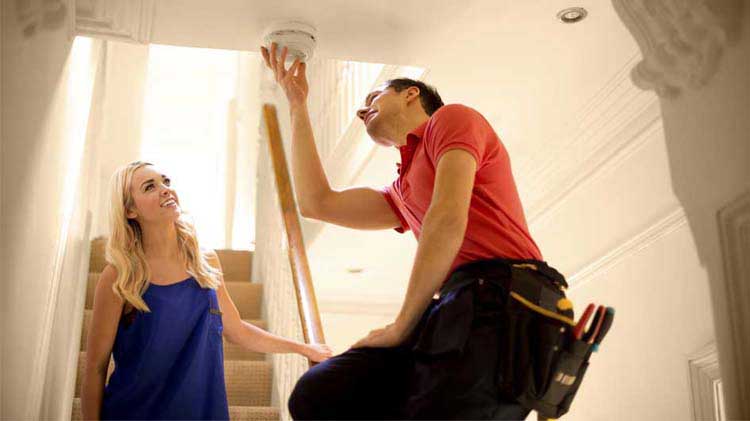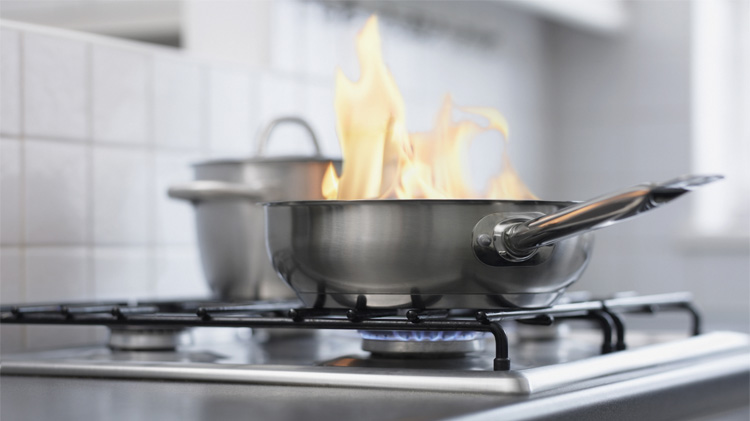Are electric blankets safe?
Before you plug in your cozy electric blanket, heated mattress pad or even a pet heating pad consider these safety tips.
Electric blankets and heating pads provide comfort on chilly days and in the winter months. However, they could potentially be a fire hazard if not used correctly.
Electric blanket safety tips
- Check the product label. Make sure your electric blanket is certified by a national recognized testing laboratory, such as Underwriters Laboratories.
- Check for safety recalls. You can check the Consumer Product Safety Commission to make sure your blanket or heating pad has not been recalled.
- Keep the heating blanket flat while using it. Folds or bunched-up areas can create and trap too much heat. Never tuck an electric blanket around the mattress either.
- Upgrade to one with auto-shutoff. If your blanket doesn't have a timer, turn it off before going to sleep. Electric blanks are not safe to leave on all night while sleeping.
- Consider your type of bed. Never use an electric blanket on a waterbed or adjustable, pull out sofa, recliner or hospital style bed.
- Use one at a time. Never use a electric blanket and a heated mattress pad at the same time due to risk of overheating.
Safety concerns with electric blankets
- Don't use an old blanket. For blankets ten years or older, they should probably be thrown away. Regardless of their condition and whether or not you see any wear, the internal elements may be deteriorating due to their age and use. Newer blankets are less likely to be worn through — and most operate with rheostats. A rheostat controls heat by gauging both the blanket temperature and the user's body temperature.
- Don't place anything on the blanket. This includes yourself unless the electric blanket is designed to be laid on. Sitting on the electric blanket may damage the electric coils.
- Don't use the spin cycle. The spin cycle's twisting, tugging and turning action might cause the internal coils in your blanket to be twisted or damaged. Get more tips on how to wash an electric blanket — and never dry clean one.
- Don't allow pets near your blanket. Cat or dog claws can cause rips and tears, which may expose the electric wiring of the blanket and create shock and fire hazards for your pet and you. If you can't keep your pet away, consider purchasing a low-voltage blanket for yourself or getting a pet heating pad for your cat or dog.
- Don't run cords under your mattress. It's tempting to keep cords hidden, but running them under the mattress creates friction that can damage the cord or trap excess heat.
How to store an electric blanket safely
- Store the cords. Unplug the controls from the electric blanket and the wall. Place the control unit and cord in a small storage bag.
- Roll or fold loosely. Rolling is best but if you must fold, fold the electric blanket or heating pad loosely, avoiding sharp folds and creases that become frayed and cause a fire hazard.
- Use a storage bag. Place the electric blanket in a storage bag with the small bag containing the control unit on top.
- Store on a shelf. Place the bagged electric blanket away but don't store anything on it to help avoid creasing the coils.
Are electric blankets bad for you?
There are several medical risks, including:
- Diabetes. Electric blankets can cause overheating and burns, especially if you have diabetes.
- Miscarriage. Using electric blankets early in pregnancy may increase the risk of a miscarriage.
- Cancer. Electric devices emit the electromagnet field (EMF) which might, in time, cause cancer.
When used right, electric blankets help run your thermostat at lower temperatures without sacrificing any warmth or comfort. However, this is only true if the electric blanket or heating pad is well maintained and properly used.




